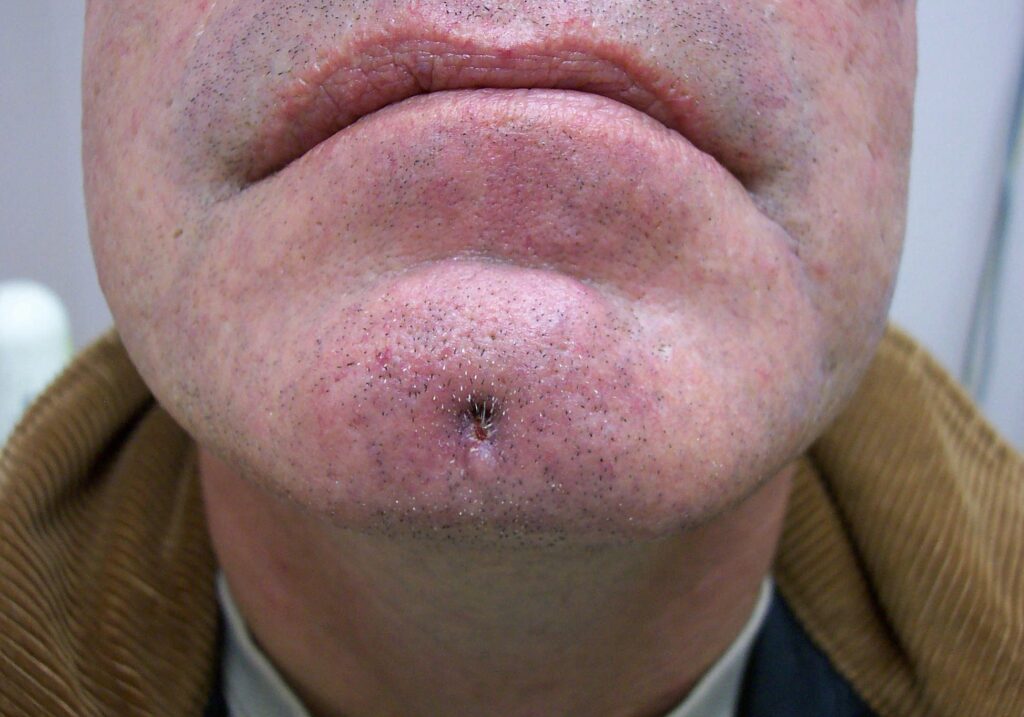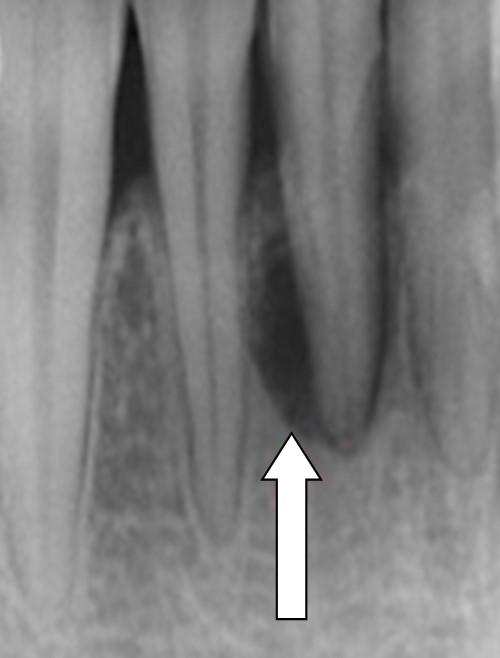What started as a tender, erythematous papule in a man’s chin, eventually eroded, forming a deep, intermittently painful and tender-to-the touch ulceration. The patient had not been to the dentist in close to three years due to the COVID-19 pandemic. What is your diagnosis?
Hole in the Chin
By Ted Rosen, MD, FAAD
Professor of Dermatology, Baylor College of Medicine, Houston, Texas
CASE HISTORY
A 32-year-old man presented with a “hole in the chin.” This lesion originally started as a tender, erythematous papule. The patient likened this to an acne papule.
However, the latter eventually eroded, forming a deep, intermittently painful and tender-to-the touch ulceration (Figure 1). Sero-purulent discharge tinged with blood occasionally came out of the ulcer.

The patient also complained of some intraoral pain, although he stated that it was less severe than a toothache associated with decay. The patient was in overall good health and taking no medications. There was no history of trauma to the area. He typically had at least yearly dental examinations but had not been to the dentist in close to three years due to the COVID-19 pandemic.
What is your diagnosis?
DISCUSSION
The patient suffers from a dental sinus tract (also known as odontogenic cutaneous sinus or dentocutaneous fistula).
This represents a fistulous tract originating in an apical tooth abscess such as that depicted (Figure 2).

This burrowing infectious process can involve either an upper or lower tooth. When a lower tooth is involved, the dental sinus usually appears on the chin or the neck. When an upper tooth is involved, the dental sinus usually appears on the upper lip or cheek.
This process is most often seen among those with bad oral hygiene, those who are immunocompromised, or those with chronic xerostomia. The etiologic tooth abscess may or may not be painful/tender and the cutaneous lesion may or may not exude a discharge.
Diagnosis is usually made by easy visualization of the periapical abscess.
Treatment is most often accomplished by administration of penicillin (500 mg BID), although some use or also add metronidazole. The affected tooth must often be extracted and eventually replaced by an implant.
Recommended Reading:
Sammut S, Malden N, Lopes V. Facial cutaneous sinuses of dental origin – a diagnostic challenge. Br Dent J. 2013 Dec;215(11):555-8. doi: 10.1038/sj.bdj.2013.1141. PMID: 24309783.

